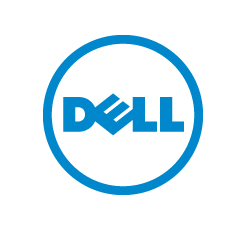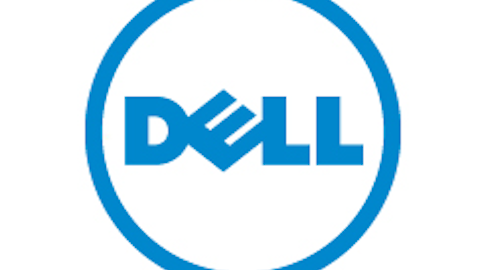
What can we do with a faster spinning washer machine, or a faster heating microwave? Not a whole lot. Maybe, that’s why General Electric Company (NYSE:GE) decided to spin off the refrigerator division of its company, not a whole lot of action in consumer durable appliances.
Computers aren’t dead yet
Computers are the backbone of many devices. So, here are the requirements I believe it would take for consumers to come to a faster product adoption cycle. Consumers will demand faster desktop processors, RAM, hard-drives, when consumers find the benefit of added computing corresponding with their needs.
Google Inc (NASDAQ:GOOG)’s latest development through Google Inc (NASDAQ:GOOG) fiber clearly proves that there’s a lot of untapped potential from computers. However, for computers to justify higher processor speeds, they would require a faster world wide web. At least according to AT&T, 74% of business applications will be found online in servers that are going to be accessed through the internet. So, faster processors would be only necessary in an environment whereby the speed of the internet were to improve. Investing in the infrastructure for fiber optics could be cost-prohibitive; however, speeds that are 100 times faster than broadband is the next frontier in computing. If that’s the case, computing will become more demanding, and the product landscape will definitely change. So, keep your eyes open for web-based technology changes as they will be heavily impacted by the speed of the internet.
For now, consumers have basic demands that seem focused on social interaction and information consumption on the internet. More complex graphic user interfaces that are more user-oriented may require better computing power. But, my hunch is that algorithmic artificial intelligence that customizes the web for user-driven purposes is going to require more computing power. On the other hand, web 3.0 is already becoming more of a reality based on the data-driven homepage that Yahoo! Inc. (NASDAQ:YHOO) has already been able to develop. In the future, the web will be full of information, but information that is specifically aimed at your own needs, desires, and interests. The creation of these complex data-systems requires skilled programmers, faster workstations, larger research and development budgets. So, more complex data usage and advances in artificial intelligence are a potential need that could be met by faster processing. No one knows what kind of content creation is possible with processors that are a million times faster than what they are now. For now, producers have been able to utilize the internet to build basic websites that accomplish basic human needs.
Currently, the internet is used for basic entertainment (watching movies online or video games), shopping (shipped to your door), interaction (social networks), content consumption (reading the Wall Street Journal and the various content channels that News Corp (NASDAQ:NWS) may have to offer), specialized needs (online banking), and Telecommuting (Elance, and Accenture Plc (NYSE:ACN)). These basic needs are being met quite adequately with today’s processing, RAM, motherboard, and hard-drive technology. However, just ten-years ago, computers would not have been able to run many of the online programs that have been created in the past ten-years. In fact, more complex human needs that can be met through the internet, and require more complex processing needs will be the driving force in future product adoption cycles.
The real problem comes from trying to identify a human need which is not being met, and which requires more advances in technology. Not only is it impossible to imagine this “need”, it becomes murkier due to the fact that the internet’s speed has not been improved enough to imagine the possibilities of even faster access to data. It becomes difficult to imagine what other needs humans may have which are not being met. Perhaps, the computer is not dead, but the market for desktop computers is giving off mixed signals.
Hardware manufacturers will slog through the mud
For now, investors should anticipate stagnant computer sales. Analysts forecast earnings growth at 0.25% on an average over the next five years for Hewlett-Packard Company (NYSE:HPQ). Hewlett-Packard is a victim of a slowing upgrade cycle; when things were heating up in the late 90s and early 2000s, consumers would replace computers every two or three years.
Kids would pick up the PC Gamer magazine thinking about the past, present, and future of computing. Computers and their uses seemed limitless; we would never forget the transition from single core to dual core. Then, all of a sudden, demand started to drop off in the late 2000s. It all came down to utility and alternatives. Consumers preferred an older desktop computer, but in return a “new smartphone.”
Desktop sales may decline over the short-term. But, over the long-term, I anticipate growth to stabilize as computers are irreplaceable. Phones aren’t a “true” replacement for content creation and complex computing needs. Therefore, computers will eventually turn around through a product upgrade cycle, with sales growth likely to stabilize at rates similar to economic growth, population growth, or inflation (basically low single digits).
Dell Inc. (NASDAQ:DELL)’s earnings growth is projected to be at 9.67% over the next five years. Analysts are anticipating higher earnings growth from Dell as unlike Hewlett-Packard Company (NYSE:HPQ), it has less goodwill impairment related charges. Dell Inc. (NASDAQ:DELL)’s business portfolio is better diversified with half of the revenue coming from enterprise, software, services, and peripherals (which have higher growth rates and higher margins than desktop computers).
Dell Inc. (NASDAQ:DELL)’s desktop and mobility represent 50% of revenue, and may see some improvements due to the tablet computers that are coming from Dell Inc. (NASDAQ:DELL).
Conclusion
The desktop computer involves the participation of many technology firms. At some point in the future, I anticipate the desktop computer to recover. Some new application and new uses that have not yet been identified will cause an unprecedented upgrade cycle. Superior uses for computing will soon be unlocked due to faster internet speeds and better artificial intelligence.
In the mean-time, low single-digit growth in desktop computers should be anticipated. Further out, a computer revolution will cause statisticians to jump out of their seats as the markets identify and execute upon the next big thing.
The article Technology Will Be Driven by Human Needs Rather Than Faster Speeds originally appeared on Fool.com.
Copyright © 1995 – 2013 The Motley Fool, LLC. All rights reserved. The Motley Fool has a disclosure policy.

